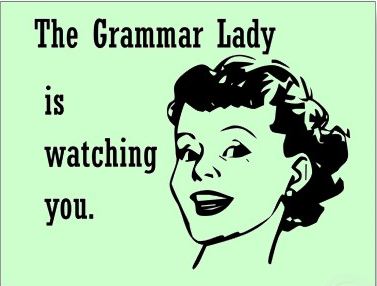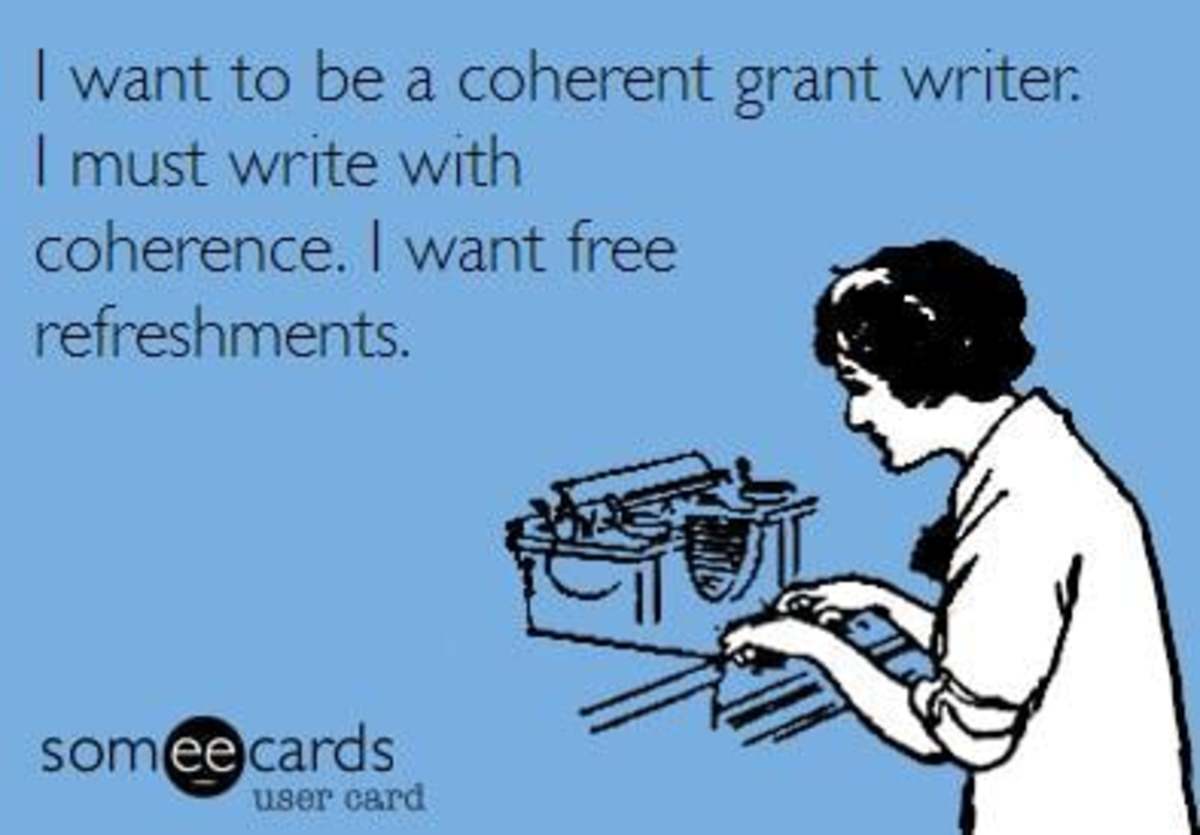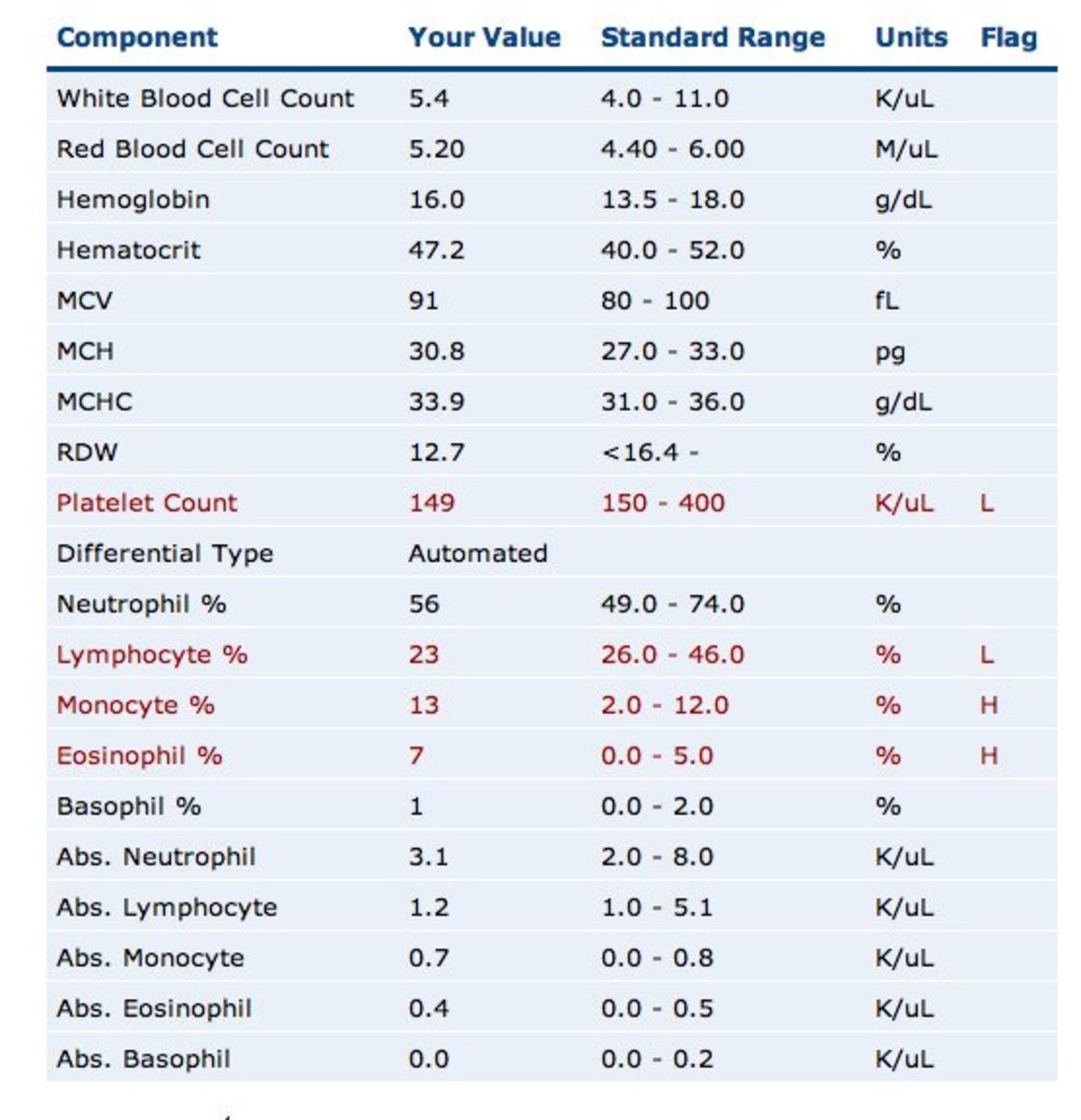Good Writing Is... #10 What you need to understand about paragraphs

The foundation of writing
If you remember back to elementary school – a long trip for some of us – you’ll recall being taught the elements of essay writing. For those of us getting more than a little gray on top, the rules were rigid. We were to write one introductory paragraph, three to five paragraphs providing supporting examples and a conclusion.
The essay consists of one idea and only one idea, developed by the use of logically connected paragraphs all supporting that idea.
Ergo, before we could write an essay we had to learn how to write a paragraph.
We learned that each paragraph is a mini-essay on its own, consisting of an introductory sentence announcing the subject matter followed by a few sentences developing the theme and a closing sentence neatly wrapping up our thoughts in a tidy conclusion.
The paragraph deals with one idea and only one idea, developed by the use of logically connected sentences all supporting that idea.
An example:
A drive through the Rocky Mountains in fall is a drive through paradise. (Introductory sentence) Color abounds, the brilliant yellows of the aspens, the deep red of the sumac, the gold of the tamarack and everywhere, the background of dull, dark green conifers. Goldenrod waves in the breeze, contrasted by the purple-red of the Indian pipe flowers and the vivid white of the wild asters. Above all this glory, the silver-grey rocky peaks mottled by patches of season-weary, dirty snow poke up into the crystal blue sky. (supportive sentences) The world is an oil painting designed by nature’s artistry. (concluding sentence)
Okay, so this is a hackneyed example of a paragraph, but it follows the rules and therefore serves as a fine example for our purposes here. This is how we older folk learned to write and deviation from the rules brought down the wrath of teacher’s red pencil and a failing grade.
The foundation crumbles
Over the years, this view of teaching fell out of favor. By the time my children went to school, the discipline of rules was abandoned to encourage creativity and the mechanics became secondary to the ideas themselves. By the time my grandchildren went to school, even the construction of the simple declarative sentence seemed to have become a lost art. Here is a sentence from a current textbook on essay writing:
“Don’t limit yourself to the dictates of form. Let your particular topic and supporting points guide you in how you create your paragraphs.”
EEGADS!

Yeah, sure. Be free. Let the creativity flow.
Don’t worry about rules and structure. They don’t matter.
And while you’re at it, go build a house without concern for the rules of engineering. Better yet, defend yourself in court without knowing the law. Or treat your child’s ailments in total ignorance of medicine and anatomy…
(Forgive my small rant.)
As a result, we now have a population brimming with ideas and talent but without a mastery of the craft of writing – particularly as it applies to the paragraph. I just spent a month reading and evaluating hundreds of short stories and should I have edited them here’s the symbol I would have to use the most:
> P
This means new paragraph here. So often is this symbol required in my editing work, I keep it in paste mode on my computer to save my weary fingers.
What does this tell me?
The art of writing the paragraph needs to be resurrected.
Understand one thing: the rules do matter. Without them, your writing will fail however brilliant your ideas. Poorly constructed writing is a chore to read, will be sloppy and amateur at best, unintelligible at worst.
Writing is a discipline. Discipline does not stifle creativity; it hones it.
So – having stressed the importance of knowing the rules of writing construction, let’s move on.
I’m going to repeat the law of the paragraph:
The paragraph deals with one idea and only one idea, developed by the use of logically connected sentences all supporting that idea.
Whether writing an essay or fiction the rule of the paragraph holds true. Though it is somewhat relaxed in fiction it is not abandoned! In fiction, we often do not develop the paragraph into a mini-essay for the simple reason we are not writing an essay, but the essence of the idea remains.
When we bring action and dialogue into the picture, the edges of our paragraph construction can get blurry, but the one idea and only one idea remains irrevocable. So, I’m going to share my own definition of paragraphs as it relates to writing fiction.
Here is Lynda’s golden rule:
For every change in subject, speaker or point of view, we need a new paragraph.
I'm now taking our example of a paragraph from above, editing it to fit a story rather than an essay and changing it into an example of a mistake I see very often.
The run-on paragraph.
On that bright autumn day, they went for a drive through the Shuswap valley, deep in the Rockies. Color abounded. The brilliant yellows of the aspens blazed against the deep red of the sumac, the gold of the tamarack and the background of dull, dark green conifers. Goldenrod waved in the breeze, contrasted by the purple-red of the Indian pipe flowers and the vivid white of the wild asters. Above all this glory, the silver-grey rocky peaks mottled by patches of season-weary, dirty snow poked up into the crystal blue sky. The world was an oil painting direct from the hand of Mother Nature. “This is paradise,” Eve murmured, turning to Adam, expecting an equally deep spiritual response to the majesty around them. He only shrugged. “I’m starving. Let’s find a place to eat.” She slumped, disappointed. What a peasant!
What’s wrong here? I’ll tell you. This should be four paragraphs – that’s right, four. It should look like this:
On that bright autumn day, they went for a drive through the Shuswap valley, deep in the Rockies. Color abounded. The brilliant yellows of the aspens blazed against the deep red of the sumac, the gold of the tamarack and the background of dull, dark green conifers. Goldenrod waved in the breeze, contrasted by the purple-red of the Indian pipe flowers and the vivid white of the wild asters. Above all this glory, the silver-grey rocky peaks mottled by patches of season-weary, dirty snow poked up into the crystal blue sky. The world was an oil painting direct from the hand of Mother Nature.
“This is paradise,” Eve murmured, turning to Adam, expecting an equally deep spiritual response to the majesty around them.
He only shrugged. “I’m starving. Let’s find a place to eat.”
She slumped, disappointed. What a peasant!
Why? Because the first paragraph is the voice of the narrator describing the setting. The second is a change in point of view to Eve. The third is a change of speaker to Adam. The fourth is change in point of view back to Eve.
However, the difficulties I see do not relate only to lack of paragraph breaks, but also to unnecessary breaks. Unless one of the above mentioned elements has changed, there is no need to start a new paragraph. Here’s an example.
The broken paragraph
The walk was a nightmare. The rain continued to pour down on her. Her once-warm woolen coat now clung to her, a heavy burden that, while it served to protect her from the wind, kept her bound in an ice-cold, soggy cocoon. Her shivers had grown in intensity until they matured into bone-shaking shudders and tremors. Her whole body convulsed. Her trembling legs moved mechanically, independent of thought as they struggled to place one numb foot before the other.
“Oh, God,” Eve moaned. “Please help me.”
As you’ve most likely surmised, I say this should be one paragraph.
Not so, some of you may think, reflecting on the example of the run-on paragraph. In this case, is not the first paragraph the voice of the narrator and the second a change in point of view?
No. Both are a description of Eve and her travails; it is all about Eve. Her prayer is not a change in point of view meriting a new paragraph but an expression of the depth of the “nightmare.” Think of it this way:
The walk was a nightmare. (Introductory sentence) The rain continued to pour down on her. Her once-warm woolen coat now clung to her, a heavy burden that, while it served to protect her from the wind, kept her bound in an ice-cold, soggy cocoon. Her shivers had grown in intensity until they matured into bone-shaking shudders and tremors. Her whole body convulsed. Her trembling legs moved mechanically, independentl of thought as they struggled to place one numb foot before the other. (Supporting sentences) “Oh, God,” Eve moaned. “Please help me.” (Concluding sentence)
Now we have the classic paragraph.
Speaking of dialogue, there’s no end to the paragraphing problems I’ve noted. Many of you are confused as to the treatment of dialogue. Here are several examples I borrowed from the entries. (I hope the authors don’t mind. My apologies otherwise. Consider it free editing.) I’m going to show them as they were, and as they should be.
Dialogue and paragraphing
As written:
‘Let’s go to the Oasis centre, I’m in a mood for some new clothes’ Nina said sipping her coffee. ‘Yep, sounds good to me, I would do with some time spent in shops myself’ Lilly agreed. They were on their lunch break, having a coffee and a cake and just sorted out some plans for the evening.
Edited:
‘Let’s go to the Oasis centre. I’m in a mood for some new clothes,’ Nina said sipping her coffee.
‘Yep, sounds good to me. I could do with some time spent in shops myself,’ Lilly agreed.
They were on their lunch break, having a coffee and a cake and just sorted out some plans for the evening.
Why? The first version has two speakers and the narrator’s point of view in a three sentence paragraph. The edited version shows one speaker/point of view per paragraph. Some new writers seem frightened by the idea of a one-line paragraph. Don’t be. White space actually picks up the pace and makes for easier reading. Long paragraphs slow us down and make the reading tedious. You’ll also note a correction in the first line. It is in fact, two sentences, not one. Also note the addition of a comma between quote and dialogue tag.
As written:
She speaks to the boy in a sad high-pitched voice.
"Hellooo! Aren't the flowers nice...you can have the ones you've already picked, but please leave some so the garden will still look pretty."
The child hesitates. The woman softens her tone.
"It's ok. You can have the flowers. Take them home to your mom. It's ok, take them."
Edited:
She speaks to the boy in a sad high-pitched voice. "Hellooo! Aren't the flowers nice...you can have the ones you've already picked, but please leave some so the garden will still look pretty."
The child hesitates.
The woman softens her tone. "It's okay. You can have the flowers...take them home to your mom."
Why? Because the first two sentences (paragraphs) relate to one speaker and one idea. The third paragraph shows two subjects. The second sentence of this paragraph actually relates the fourth paragraph. Doesn’t it flow better this way?
As written:
I had just finished filling the garden sacks and storing them by the shed when I noticed an old man stood by the fence. He saw me looking but didn’t move on. “Can I help you?” I asked. Going closer I saw the sadness in his eyes. “I’m sorry I didn’t mean to disturb you” he replied “This is the first house my wife and I lived in when we first married 48 years ago” Seeing tears in his eyes I invite him in to sit a while on the garden seat. “We had many happy years in this house, our children were raised here, and when her mother died she planted a gardenia bush for her right where she could see it from the window, the house always smelled of gardenias through summer. She always wanted to come back here to see if it was still there”…. (this is not the end of the paragraph, nor the conversation but enough for our purposes.)
As edited:
I had just finished filling the garden sacks and storing them by the shed when I noticed an old man stood by the fence.
He saw me looking but didn’t move on.
“Can I help you?” I asked. Going closer, I saw the sadness in his eyes.
“I’m sorry I didn’t mean to disturb you” he replied “This is the first house my wife and I lived in when we married 48 years ago”
Seeing tears in his eyes, I invited him in to sit a while on the garden seat.
“We had many happy years in this house. Our children were raised here, and when her mother died, my wife planted a gardenia bush in her memory right where she could see it from the window. The house always smelled of gardenias throughout the summer. She always wanted to come back here to see if it was still there,” [said the old man]
Why? By now you can answer this yourselves. For every change in speaker, subject or point of view…. Again, I stress long paragraphs impede the pacing of your story. Don’t be afraid of one-liners. (And you might note the other editing fixes.)
Enough examples and enough about paragraphing dialogue, though there are still many, many issues to discuss. But I think this area merits a hub of it's own and I'll get to it in due course.
Time to move on to another problem area: unrelated sentences in a paragraph. Remember, the paragraph deals with one and only one idea.(And yes, I know I'm repeating myself and likely becoming monotonous, but that's how we learned back in the dark ages -- and it worked.)
Once again, I'm going to use examples from some of your writing -- and the same qualifiers apply. (I mean no disrespect, nor embarrassment to anyone and apologies, while tacit, are entirely genuine.)
The non-sequitor paragraph
Funny how things never work out the way you think they will. For example, I’d always thought that moving out of my parent’s home into a flat of my own would be sheer unmitigated joy. But there’s nothing joyful about forking over three-quarters of your pay just for rent, and the landlord was far less accommodating than Mom and Dad had been. Then there’s the work. I had to do my own laundry and clean the place now there was no Mom coming along behind me, picking up. I even had to fix my own meals. One nice thing about my Mom, she’s an excellent cook, even went to some fancy cooking school in France before she married my Father. While I was happy about the extra freedom, I wasn’t so thrilled about washing dishes every day or spending Sunday at the pay-laundry washing three loads of smelly clothes. Nope, it sure wasn’t the life I had envisioned.
What’s wrong here? Here’s this beautifully written paragraph about the trials of one young person’s discovery that life isn’t a bowl of cherries, so why are there two sentences about his Mother and her cooking history? Do you notice how they interrupt the flow of the paragraph? They don’t belong here. As an editor, I would remove the two underlined sentences completely, leaving an excellent classic paragraph with a strong introduction, supporting sentences and a good conclusion.
We often went to the seaside at Redcar when I was a kid, Mickey and me. First off he would stay overnight with us, we'd have breakfast - usually cereal, jam and bread and a glass of milk. Mam would take off the cream before she'd let us pour the milk. Our milkman always delivered silver top milk in pint bottles to our house, as gold top was dearer by a shilling or so a week, but at least it wasn't on ration any more (not for a few years now, at any rate).
This paragraph is borrowed from an entertaining entry, one I liked despite the problems in construction for the charming colloquial language in which it’s written. This was the unfortunate opening paragraph. As an editor, I’m not quite sure how I’d deal with it. The sentence in italics, while interesting, doesn’t relate to the rest and I’m not quite sure about the underlined one. The introductory sentence leads us to believe we’re about to hear about a childhood trip to the seaside. The second sentence is weakly acceptable, perhaps as a description of the preparations for the trip, but then we’re off on a tangent about the milk and Mam. Finally, we’re way off track with a description of milk delivery, prices and rationing. The whole paragraph lacks cohesion. I feel cheated. The author doesn’t deliver what he said he was going to deliver. Too many competing ideas here, all unrelated to the preceeding ones. (Having dissected this author’s introductory paragraph, allow me to say the essay is delightful in many other aspects.)
Dead centre, impossible to miss is a huge chest. It looks like the type someone might use to travel by ship. I’d seen pictures similar to this one in our history book at school. Zoe walks there, stopping beside an ornate oval mirror.
Just so you know, we’re with two young girls exploring in an attic. What’s wrong here? Zoe and the ornate oval mirror have no relation to the chest. One idea per paragraph, please and start a new paragraph for every change in point of view.
“That business about your mother hating Texans.” ElizabethRae’s accent is stronger than usual. The first semester of their senior year at Jefferson College is behind them. They are about to cross the Delaware Memorial Bridge, leaving around 120 miles of Turnpike ahead. Once the Garden State is behind them, it will be another two hours before they arrive safely in John’s hometown of Waterbury, Connecticut. If they’re lucky.
There are more problems here than just the fact the opening sentence has nothing to do with the body of the paragraph. So you know, there is a conversation going on in the car. Suddenly, we get this dump of information attached to this quote, interrupting the dialogue. There are far more artful ways of giving the reader the needed background. As an editor, I would suggest perhaps the driver could remind Elizabeth of how far they had to go. And Elizabeth might respond with some remark about being glad to be on semester break but how sorry she is she has to spend so much of her vacation travelling. The idea that her boyfriend’s mother might hate Texans could come in either before or after the suggested exchange. Anything is preferable to this sudden intrusion in the conversation, and the road map certainly has no business being attached to such an unrelated opening.
In closing --
and I must close; this hub is getting rather long -- remember the basic law of paragraphs:
- The paragraph deals with one idea and only one idea, developed by the use of logically connected sentences all supporting that idea.
and Lynda’s golden rule:
- For every change in subject, speaker or point of view, we need a new paragraph.
Apply these two simple ideas to your writing and your paragraph skills will improve immensely. Together, we can resurrect the art of the paragraph before it dies out completely and passes into extinction.
My editor, Kathryn Lynn Davis, once wrote on my manuscript, apologizing for the amount of revisions she had suggested, saying, "Each word in each sentence must be as strong as it can be; each sentence in each paragraph must be as strong as it can be; each paragraph in your work must be as strong as it can be and then you will have a strong whole."
Those are words of wisdom for the writer to ponder.
Lynda M Martin -- December 1, 2011
*
Editors just can't help themselves

Links to the other Good Writing Is... hubs
- Good Writing Is ... #1 -- the two biggest mistakes made by new writers
Here are the two pitfalls made by new writers, and a new way to look at telling a story. - Good Writing Is ... #2 The author's voice has no place in his work
The second in the series Good Writing Is ... discusses why the author's voice should not appear in his work -- a common mistake by many new writers -- setting the stage. - Good Writing Is ... # 3 What is the most important element of successful fiction? -- Characters!
Number 3 in the series on good writing asks the question: what is the most important element in successful fiction. The answer is good characters. Here we explore what makes good characters, how do we develop them and how to present them. - Good Writing Is...#5 The plot thickens -- plotting for beginners
#5 in the series, Good Writing Is... deals with plots and how to develop the plot in fiction, whether short story or novel. Called plotting for beginners, we discuss the form of plot, how to map a plot and how to prepare the plot for writing. - Good Writing Is...#6 -- Plotting #2 -- The Scene Approach
Welcome to this, the second in our lessons on plot structure. We are ready to take our proposed plot and divide it into scenes -- and then build those scenes. Let's construct a novel. - Good Writing Is...#7-- 10 common mistakes new writers make in writing dialogue.
No skill is more important to the fiction writer than a mastery of the mechanics of good dialogue. Here are the ten most common mistakes new writers make and how to avoid them. The ten rules of dialogue. - Good Writing Is ...#8 Point of view -- the five big questions writers need to answer
There are five big questions the writer needs to answer in developing the point of view of his work. - Good Writing Is...#9 The importance of voice #1 -- writing the child's perspective
The ninth in the Good Writing Is... series begins an exploration of 'voice' in writing. Todays discussion: writing from the child's perspective. The challenge of writing in the child's voice.








